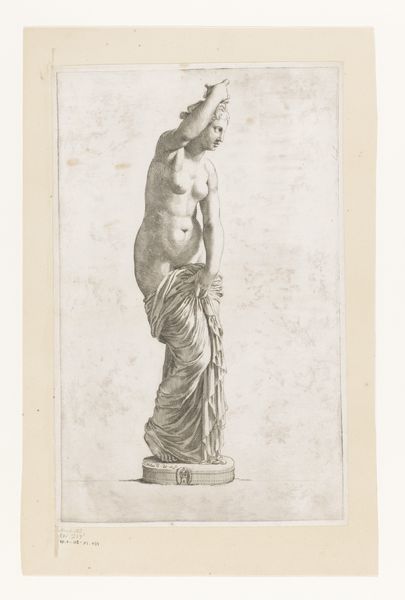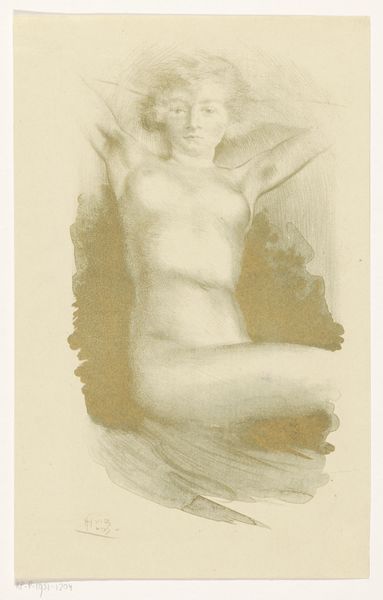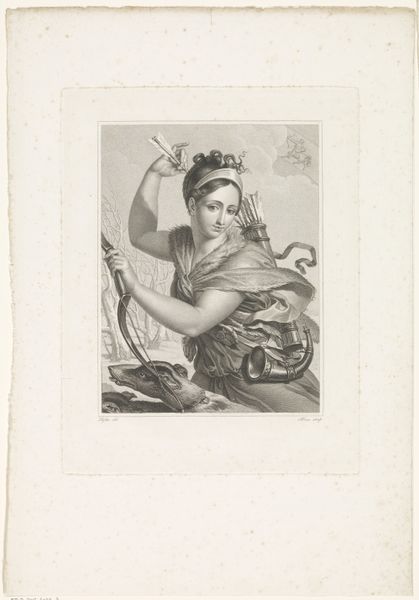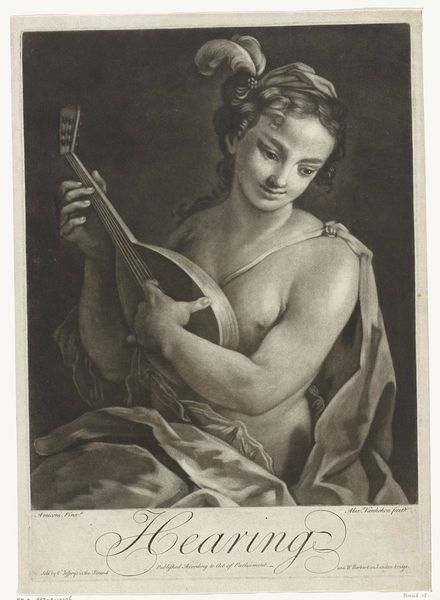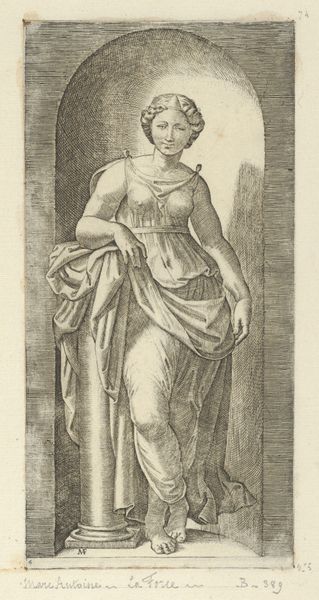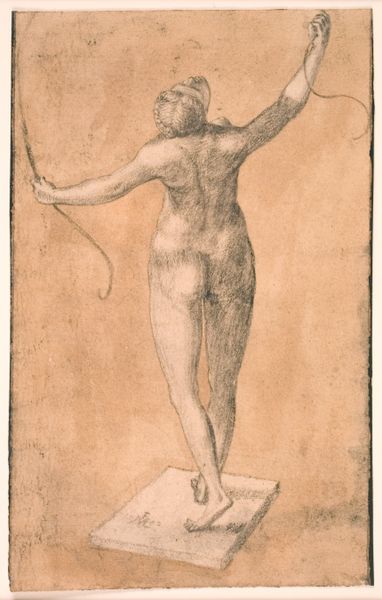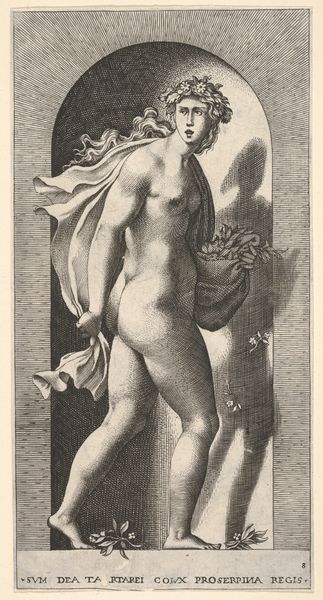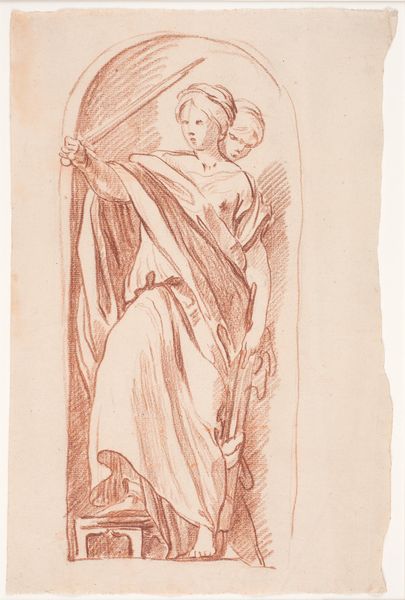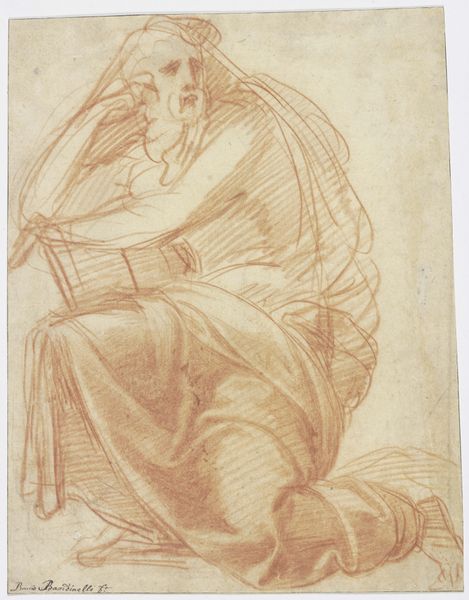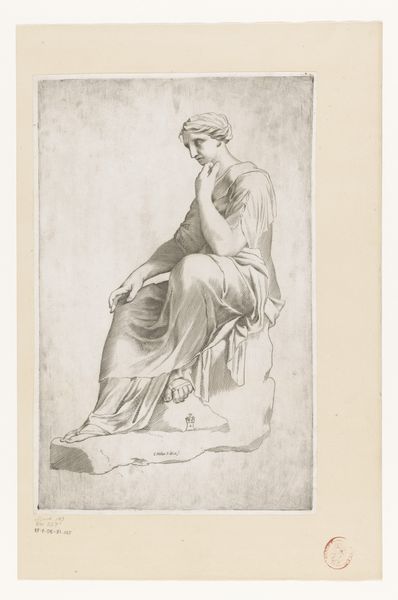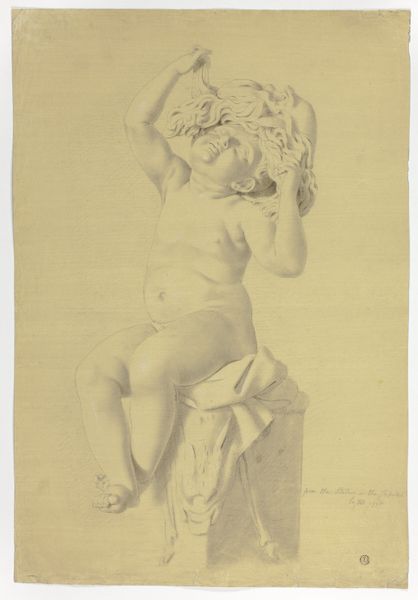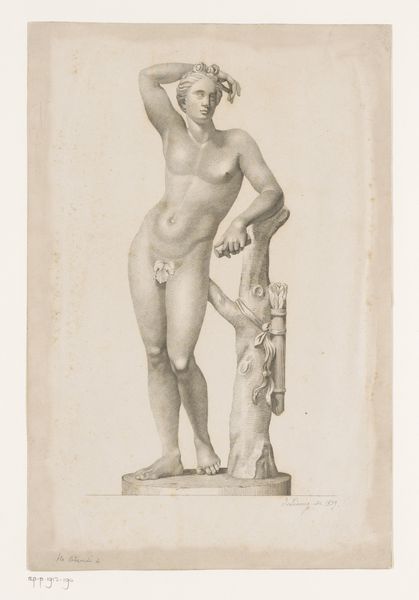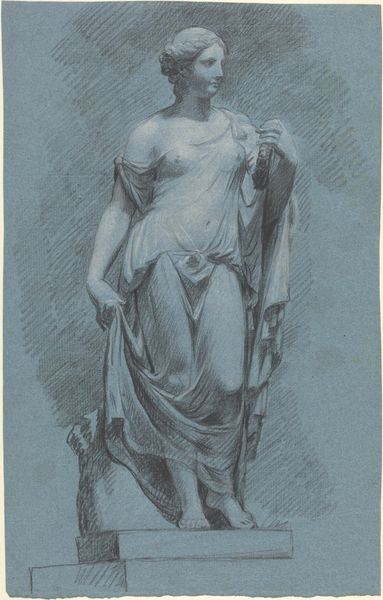
print, engraving
# print
#
old engraving style
#
figuration
#
form
#
classicism
#
line
#
portrait drawing
#
history-painting
#
academic-art
#
engraving
Dimensions: 123 mm (height) x 91 mm (width) (plademaal)
Editor: This engraving from between 1780 and 1836, titled "Overdel af amasonestatue" or "Upper Part of an Amazon Statue", by Oluf Olufsen Bagge, presents a classical figure. I’m immediately struck by how the artist uses such delicate lines to convey both strength and vulnerability. What visual echoes do you find most compelling in this work? Curator: The power of this image rests in the Amazon's pose. Raising a small piece of her own dismembered breast, she transforms an act of violence into a signifier of identity and empowerment. The removal of the right breast allowed for greater ease in drawing a bow. So, in this period, think of the Amazon as a culturally acceptable trope for discussions around women in masculine roles: think military or political spheres, artistic excellence, and so forth. It became a potent emblem, fraught with anxieties and possibilities. The breast in hand...what does *that* say to you? Editor: It feels...almost defiant? Like a trophy or a challenge to conventional ideas about women. Does the clean, classical style also contribute to this defiance, framing the figure as both a woman and a warrior? Curator: Precisely! Classicism, with its emphasis on reason, order, and the idealized human form, offers a structured language through which these radical ideas could be articulated – and perhaps, made palatable – to a wider audience. What is especially interesting is the relationship between the female figure and power. Editor: I never considered how radical this image might have been, hiding in plain sight within a traditional style. Now I see how it embodies both defiance and the social codes it seems to subtly question. Curator: Indeed! This artwork serves as a stark reminder of the symbolic power we invest in images, and how they reflect our ongoing negotiation of identity, gender, and history.
Comments
No comments
Be the first to comment and join the conversation on the ultimate creative platform.
